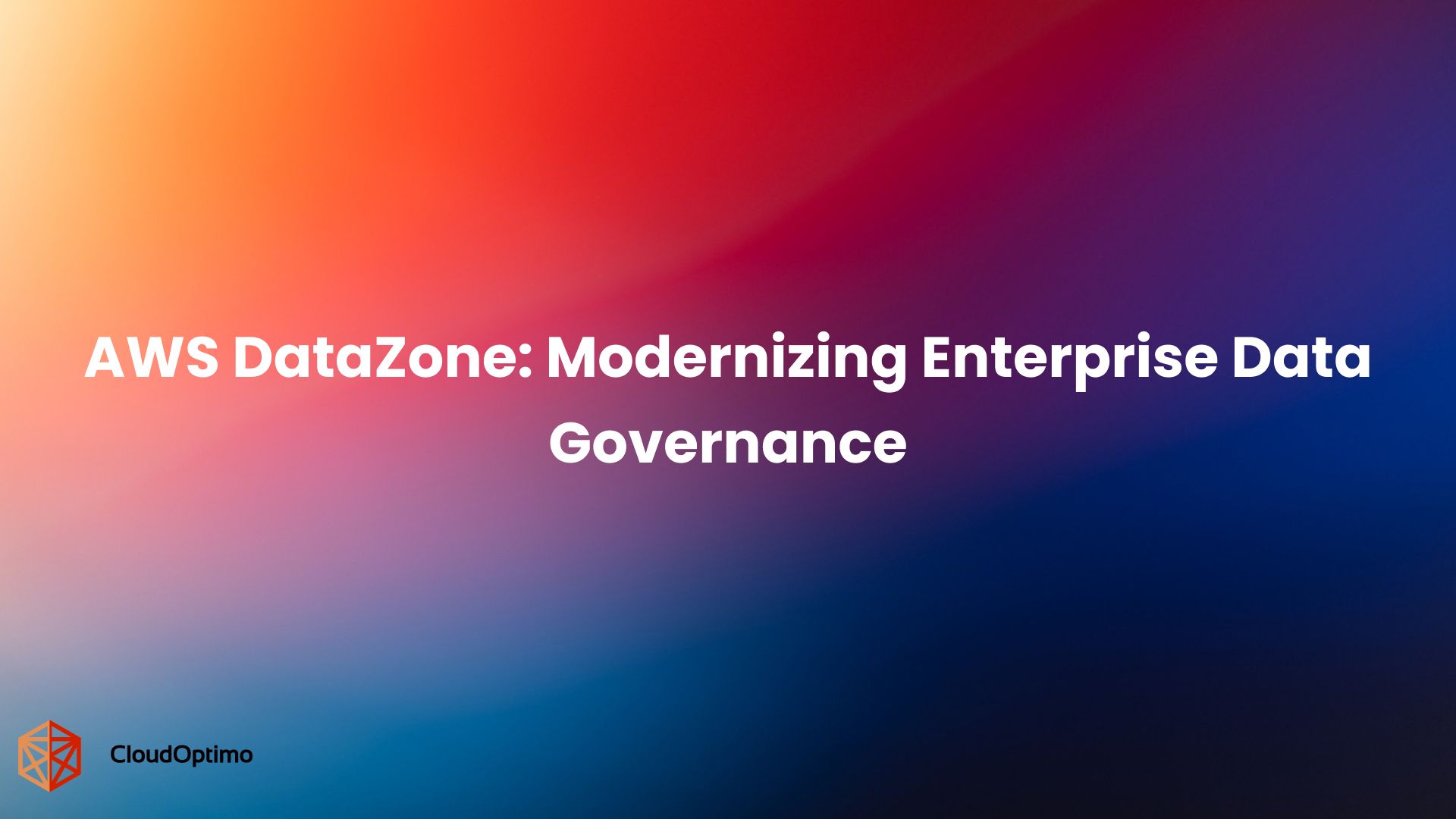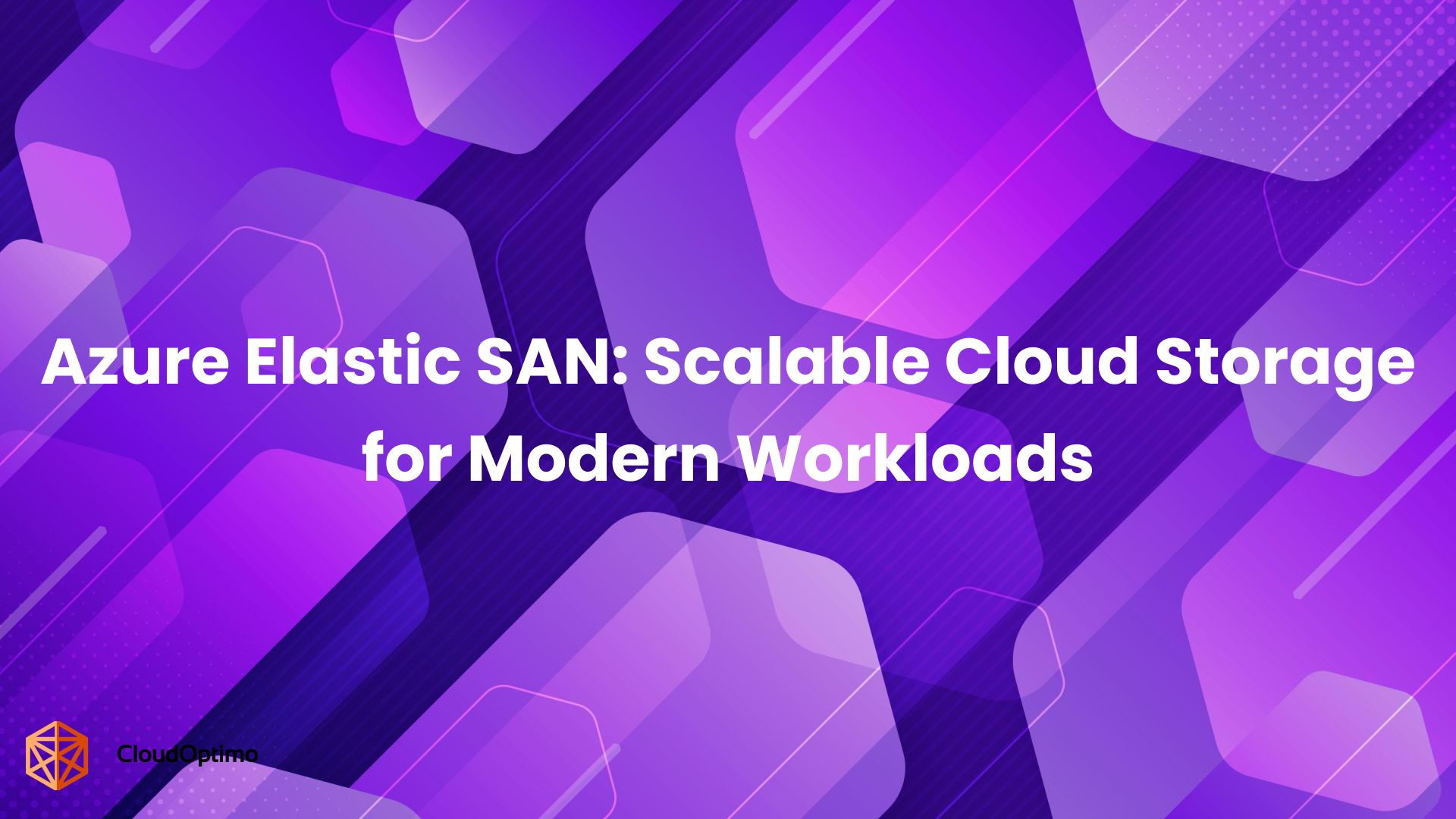In 2025, AWS Savings Plans remain a primary cost optimization mechanism, offering up to 72% savings compared to On-Demand pricing. However, the effectiveness of these plans depends entirely on the precision with which they are applied.
Many teams fall into one of two categories:
- Those who avoid committing due to the fear of limited spending, or
- Those who overcommit based on assumptions that don’t hold over time.
The challenge is not due to a lack of cost-saving potential, but the growing variation of cloud usage. Today’s infrastructure increasingly relies on temporary workloads, GenAI experimentation, containerized environments, and autoscaling patterns, all of which disrupt the predictability that Savings Plans rely on.
This blog offers a structured approach to using Savings Plans effectively: identifying stable workloads, committing responsibly, and preserving flexibility where usage is less predictable.
We begin by analyzing where Savings Plans deliver real value and where they consistently fall short.
The Psychology of Overcommitment: Why Smart Teams Make Expensive Mistakes
Before diving into technical strategies, it's crucial to understand why intelligent engineering and finance teams consistently make costly commitment errors. The pressure to demonstrate immediate cost savings often overrides careful analysis.
Consider the quarterly budget review scenario. Leadership expects to see reduced cloud spending, and Savings Plans appear to offer an immediate path to substantial discounts. The 72% potential savings figure becomes a target rather than a conditional outcome. Teams feel pressured to commit to coverage that looks impressive in budget presentations, regardless of whether actual usage supports those commitments.
This pressure intensifies during rapid growth phases. When a company is scaling, there's an assumption that current usage patterns will continue expanding. Teams commit to Savings Plans based on projected demand rather than proven consumption. The retail platform mentioned later in this blog fell into exactly this trap, committing $300,000 based on anticipated 3x traffic growth that never materialized.
Another psychological factor is the fear of missing out on discounts. When teams see that EC2 Instance Savings Plans offer up to 72% savings, they often prioritize maximizing the discount percentage over ensuring the commitment matches actual usage. This leads to choosing more restrictive plans that offer higher savings but create inflexibility when workloads inevitably change.
The quarterly reporting cycle compounds these issues. Teams need to show cost optimization results within specific timeframes, which encourages front-loading commitments rather than taking the measured approach that would yield better long-term results.
Warning Signs You're About to Overcommit
Recognizing the early indicators of misalignment can prevent long-term inefficiencies. These signs often appear before the commitment is made, but are overlooked under time pressure:
Commitment decisions tied to reporting deadlines
When Savings Plans are purchased to satisfy leadership timelines rather than confirmed usage, the risk of underutilization increases.
Planning during periods of rapid scaling
Usage growth during expansion phases is often uneven. Committing at the peak of this cycle creates long-term cost exposure.
Lack of multi-quarter usage validation
Relying on recent spikes or short-term trends can lead to false confidence in workload stability.
No alignment between finance and engineering
When commitments are made by one side without full visibility into the workload lifecycle or cost constraints, utilization often suffers.
Focus on savings percentage over flexibility
Choosing higher-discount plan types without considering future infrastructure changes increases rigidity and potential waste.
These patterns are not edge cases; they’re recurring mistakes even among teams with FinOps practices in place. Addressing them early is essential before evaluating which workloads are truly ready for committed plans.
Evaluating When AWS Savings Plans Drive Value - and When They Don’t
AWS Savings Plans offer up to 66% cost savings compared to On-Demand pricing for Compute Savings Plans and up to 72% for EC2 Instance Savings Plans. These are substantial reductions, but they are conditional on accurate planning. When commitments are misaligned with actual usage, they create inefficiencies that offset the benefits.
This section explains where Savings Plans consistently deliver value, and where they become a liability.
Conditions That Lead to Effective Savings
Savings Plans work best when applied to compute workloads that are stable, essential, and unlikely to change in structure or scale during the commitment period. The plans reward long-term consistency, not short-term growth assumptions.
An organization runs a customer-facing analytics platform on EC2 that consistently consumes $8,000/month in compute over the past year. The workload is critical in production and shows no signs of architectural change. By purchasing a 1-year, no-upfront Compute Savings Plan for $7,000/month, the organization saves $12,000 annually while retaining flexibility across instance types and regions.
This is an example of a stable workload matched with a moderate-term plan at a commitment level supported by historical data, not assumptions. Savings are achieved without constraining future architecture decisions.
Where Commitments Go Wrong?
Savings Plans lose value when commitments are made without sufficient insight into workload behavior. This often happens when:
- Early commitments in test or pilot environments
- Planning based on expected growth without verifying sustained usage
- Lack of collaboration between finance and engineering teams
The result is overcommitment where plan coverage exceeds actual compute use. This doesn’t just waste budget; it limits the ability to adjust spending as priorities shift. Once a commitment is locked in, it cannot be paused or easily redirected.
Consider a team that anticipates scaling up a new service and commits to $5,000/month in Savings Plans. If actual usage stabilizes at only $2,500/month, they will carry $30,000/year in underutilized commitment despite expecting cost savings.
Even well-intentioned decisions can lead to inefficiencies if they’re based on an incomplete picture of how infrastructure is evolving.
Risk Factors That Disrupt Assumptions
Cloud environments evolve rapidly, especially in organizations undergoing modernization or expansion. Even commitments made with the right intent can be undermined by:
- Shifting to containers or serverless models (which reduce EC2-based compute)
- Regional migrations or expansions (which affect plan applicability)
- Workload segmentation (where compute becomes fragmented across services or accounts)
Savings Plans are not transferable across services like Lambda or Fargate, and EC2 Instance Savings Plans are bound to specific instance families and regions. In dynamic environments, these constraints become more pronounced over time.
Without a process for tracking change and revalidating commitments, these shifts create mismatches between what is committed and what is consumed.
Cost savings are maximized not by committing aggressively, but by committing precisely. This requires clear evidence of usage stability, shared context across teams, and regular re-evaluation of what should be covered.
Before purchasing any Savings Plan:
- Verify historical usage stability across a representative period (typically 3–6 months)
- Confirm that no near-term architectural or regional shifts are planned
- Align financial planning with actual workload behavior, not forecasted growth
Their effectiveness reduces when used speculatively or applied to environments that are still changing. The cost advantage depends on one thing: committing only when the usage justifies it.
Identifying Commit-Ready Workloads
Ending unnecessary cost exposure begins with knowing which workloads are suitable for commitment. You can reduce the risks of overcommitment, misalignment, and architecture fluctuation by limiting the scope of initial plans to only those workloads that meet clear, verifiable criteria.
Commitments should not be based on projected demand or planned growth. They should reflect actual, observed patterns in production environments.
Three Questions That Save You From Costly Mistakes
A workload qualifies as “commit-ready” when it demonstrates the following three characteristics simultaneously:
- Has usage been consistent over time? The compute cost stays within a narrow range (±10%) month over month. Example: A workload with monthly EC2 spend fluctuating between $9,800–$10,200 over the past 6 months.
- Will this workload remain essential long-term? The workload is essential to daily operations, tied to core products or services, and unlikely to be deprecated or re-architected in the near term.
- How frequently does this workload change? Deployment, scaling, or environment configuration changes are limited and managed, indicating that sudden usage shifts are unlikely.
If any one of these is missing, the workload is not ready for a commitment.
Validating Stability Without Forecasting
Organizations often overcomplicate validation. You do not need detailed projections to identify commit-ready usage. Use the following data points:
- Rolling 6–12 month usage window: Focus on the lowest observed monthly compute spend, not the average. This becomes your commitment ceiling.
- Deployment and infrastructure change logs: Look for high frequency of scaling events, refactors, or migrations. If change is frequent, delay commitment.
- Product or team ownership confirmation: Ensure the team responsible has no plans to shift platforms, regions, or compute models in the coming term.
These inputs allow for confidence in current behavior rather than speculation about the future.
Establishing a Commitment Baseline
Once a workload meets the above criteria, calculate a baseline for commitment. This is not a percentage of your total cloud spend. It is the lowest consistent usage level you can defend with historical data.
For example:
- Period: January – June 2025
- Monthly EC2 Spend: $10.2 – $12.5K
- Average: $11.4K, lowest $10.2K
The safe commitment baseline is $10,000/month. Any coverage beyond this introduces unnecessary risk.
Safe Commitment Strategy
Once a commitment baseline is established, the next step is execution, deciding how much to commit, for how long, and under which plan type. This section outlines a conservative, structured path for doing so.
Selecting the Right Plan Type and Term
Different types of Savings Plans offer different trade-offs
| Plan Type | Flexibility | Suitable For |
| Compute Savings Plan | High (across instance types/regions) | Mixed or evolving environments |
| EC2 Instance Savings Plan | Low (fixed instance family/region) | Single-region, long-running fixed workloads |
For most organizations operating in a dynamic environment, Compute Savings Plans on a 1-year term are the right starting point. They allow you to adapt while still achieving significant savings, typically 25% to 40% compared to On-Demand rates.
If your workload is architecturally fixed (e.g., same EC2 family, no regional movement), EC2 Instance Plans can offer slightly higher discounts, but with higher risk.
Note: Actual savings depend on the commitment term and payment option. Refer to AWS pricing documentation for current rates: AWS Savings Plans Pricing
Using 1-Year, No-Upfront Plans for Risk Control
In uncertain usage environments, 1-year, no-upfront Compute Plans provide the best balance:
- No upfront payment avoids capital lock-in.
- Short-term supports annual planning cycles.
- Flexibility across regions and compute types protects against architecture shifts.
This structure allows teams to respond to change without absorbing sunk costs. If usage drops, the financial exposure is time-limited and adjustable after a year.
Phased Commitment Based on Measured Usage
Avoid committing to 100% of your baseline on day one. Instead, implement a phased approach:
Quarter 1:
- Commit to 50–60% of verified baseline usage.
- Evaluate utilization monthly to confirm full use of the committed amount.
Quarter 2+:
- If actual usage exceeds committed levels consistently, add another 20–30% commitment.
- Avoid committing to anticipated growth; only respond to proven trends.
This approach limits exposure, allows for mid-cycle corrections, and ensures that each layer of commitment is backed by real-world behavior.
Commitment Readiness Framework
A Savings Plan should never be purchased based on assumptions. Commitment requires operational confidence. This framework helps teams assess whether they’re ready to make a financially sound commitment that aligns with actual workload behavior
To move forward, usage must be stable. At a minimum, the workload should have maintained consistent compute demand over two or more quarters. If that usage pattern is flat or predictably increasing, it's a strong candidate for commitment.
Architectural certainty is equally important. Any plan to re-platform a service, such as containerization, regional migration, or shift to serverless, introduces risk. Savings Plans do not automatically adjust to such changes.
Business continuity is the third checkpoint. The workload should have long-term ownership, a clearly defined purpose, and be expected to remain operational for the next 12 months or longer.
Before proceeding, teams should be able to answer the following with confidence:
- Has the workload's compute usage been consistent over time?
- Are the services and instance families likely to remain unchanged?
- Is there a responsible owner maintaining the workload?
- Can a conservative monthly usage baseline be estimated without relying on projections?
These are not technical questions; they are operational and financial readiness checks. If any answer is uncertain, defer the commitment and monitor the workload further.
A quarterly review cycle ensures readiness is revalidated over time. AWS Cost Explorer and the Cost and Usage Report (CUR) should be part of this process, helping teams identify underutilization early and adjust future commitments accordingly.
Handling Change After Commitment
Even with strong planning, workloads change. When this happens after a Savings Plan has been committed, teams must take structured steps to protect value.
Savings Plans are tied to specific usage patterns - region, instance family (for EC2 Plans), or broader compute usage (for Compute Plans). If workloads shift away from these parameters, utilization drops. This reduces savings and locks up budget in underused coverage.
Responding effectively starts with visibility. Teams should regularly monitor where utilization is declining. AWS provides plan-level utilization metrics that show whether commitments are being met. Cost allocation tags and account-level breakdowns further help identify which workloads are no longer aligned with commitments.
If usage has shifted:
- Pause any new Savings Plan purchases
- Evaluate whether unused capacity can be reabsorbed by shifting internal workloads to match committed plans
- Consider adjusting workload placement, such as favoring regions already covered by commitments
- Prepare to change plan types in the next purchasing window if coverage gaps persist
Where change is expected or already underway, it is better to rely on 1-year, no-upfront Compute Plans. These provide the flexibility to course-correct without significant sunk costs. EC2 Instance Plans, while more aggressive in savings, require a much higher degree of workload certainty.
The most resilient commitment strategies are the ones that build flexibility from the start. Rather than assuming full workload stability, teams should plan for incremental commitment, adding coverage only when patterns are fully validated and remaining open to change.
Coordinating Across Finance and Engineering
Effective Savings Plan decisions are not made in isolation by cloud teams. In 2025, as infrastructure decisions increasingly impact financial reporting, commitment planning must be treated as a joint responsibility between engineering and finance.
This shift requires a structured collaboration model, one where commitments are approached as financial instruments, not just infrastructure levers.
Planning Commitments as Budget Decisions
Savings Plans represent multi-month spend obligations. As such, their planning belongs in the same conversations as capital allocation, budget forecasting, and quarterly cost targets.
Finance teams must be involved early to ensure that any commitment aligns with broader budget timelines and cash flow constraints. Likewise, engineering must clearly define what workloads are stable, what usage is committed, and where flexibility is still required.
A mature commitment planning process will include:
- An agreed-upon forecast baseline derived from actual workload usage
- Defined time horizons for each commitment (e.g., rolling 12-month vs. static term)
- A clear escalation path for evaluating architectural or regional changes that impact usage
This level of coordination turns reactive cost recovery into proactive spend planning.
Aligning Financial and Technical Contexts
Many organizations struggle with disconnects between cost objectives and technical priorities. Engineers optimize performance, scalability, and resilience, while finance teams prioritize predictability and return on investment.
Savings Plans sit at this intersection. To use them responsibly, both sides need visibility into what matters to the other:
- Finance must understand usage patterns and architectural constraints
- Engineers must understand financial exposure and utilization expectations
Regular reviews, monthly or quarterly, should surface this context.
For example, if a team is planning regional expansion or migrating to ECS or Lambda, this must be considered in future commitment decisions. Conversely, if finance is targeting 20% cost reduction from EC2 spend, engineering needs to understand what constraints apply.
Shared Accountability Improves Outcomes
No commitment decision should be made without shared accountability. When only engineering or finance owns the outcome, plans skew either toward risk aversion or overcommitment.
Assigning joint responsibility for utilization metrics ensures that commitment strategies are driven by validated data and real business priorities. This also encourages both teams to monitor and refine their plans regularly, instead of treating them as set-and-forget agreements.
For example, defining a 90% utilization target for a specific plan and assigning shared visibility to both a FinOps analyst and a technical lead creates the conditions for active management. The result: better coverage accuracy, fewer underutilized commitments, and better alignment with business performance goals.
Real-World Outcomes: Successes and Mistakes
Actual implementation of AWS Savings Plans reveals consistent patterns. Where applied with discipline, they yield material cost reduction. Where rushed or misaligned, they create long-term inefficiencies. Below are examples illustrating both outcomes.
- Gradual Commitment to Stable Production Usage
A digital payments company with consistent daily compute demand (~$12,000/month on EC2 and Fargate) evaluated its baseline usage over two quarters. Once the team confirmed workload stability, they committed to a 1-year Compute Savings Plan covering 80% of the baseline compute.
- Pre-commit spend: $144,000/year (at On-Demand rates)
- Effective Savings Plan coverage: ~$9,600/month
- Realized savings: 34% (net savings: ~$39,000/year)
- Waste: <2% unused commitment over the year
They extended coverage to 95% after validating a second quarter of stable growth. This phased approach allowed financial control without introducing coverage risk.
- Overcommitment in Experimental Expansion
A retail platform anticipated a 3x traffic surge in a new Asia-Pacific region and committed to a 3-year EC2 Instance Savings Plan, totaling ~$300,000 for r5.large and c6g.medium usage.
After six months, business priorities shifted, and regional focus changed. Only ~30% of the covered instances were utilized, resulting in:
- Underutilization rate: ~70%
- Effective realized savings: Negative - net loss of ~$120,000 over the first year
- Lock-in: 3-year, partial upfront term prevented cancellation or reallocation
This resulted in costs, reinforcing that speculative growth should not guide long-term commitment.
- Regional Mismatch and Coverage Loss
A SaaS enterprise deployed a $500,000 Compute Savings Plan covering workloads primarily in North America. Within four months, 40% of new services were launched in the EU and APAC regions without adjusting the Savings Plan.
- Underutilized commitment across regions: ~$140,000
- Net coverage efficiency: Dropped from 90% to 65% within two quarters
- Cause: Regional shifts not factored into the original commitment
The team restructured by pausing new commitments, revising regional usage models, and re-aligning spend forecasts quarterly.
How to Proceed with Confidence
Savings Plans focus on committing to predictable spending that aligns with operational facts, rather than solely maximizing upfront discounts.
Financial Impact Ranges
Savings vary based on plan type and commitment structure:
| Plan Type | 1-Year No Upfront | 1-Year Partial Upfront | 3-Year No Upfront | 3-Year All Upfront |
| Compute Savings Plan | ~28% | ~31% | ~44% | Up to 66% |
| EC2 Instance Plan | ~29% | ~36% | ~52% | Up to 72% |
For current service-specific rates and plan comparisons, refer to the AWS Savings Plans Pricing Guide.
Ultimately, responsible commitment planning is about building cost efficiency with stability. The goal is not to maximize short-term savings, but to ensure long-term control, alignment, and adaptability. Successful organizations view commitments as ongoing strategies that need regular review and refinement.
Start with what you know. Commit where you’re confident. Adapt as your architecture evolves. That is how you make the most of AWS Savings Plans without overcommitting.





